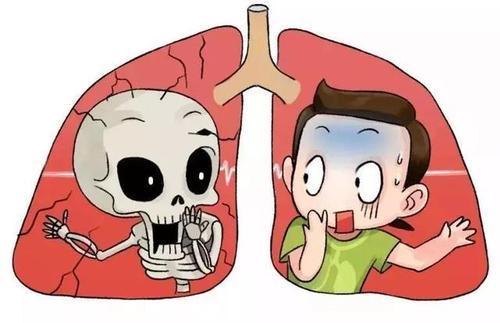Pneumonia is a common systemic disease and has become the third most lethal disease in the world. It is more common in autumn and winter because the weather is dry and changeable. November 12 is World Pneumonia Day. According to the World Health Organization, pneumonia is the number one killer of children under 5 years old worldwide.
01
STEPS Why are infants and young children prone to pneumonia
Infants and young children are prone to pneumonia due to their physiological characteristics, such as narrow trachea and bronchial lumens, less mucus secretion, poor development of lung elastic tissue, rich blood vessels that are easy to congest, less air in the lungs, etc., coupled with poor immunity, which makes infants and young children not only prone to pneumonia caused by Streptococcus pneumoniae, but also more serious once it occurs. After the age of 5, the throat of children will gradually develop soundly, and respiratory diseases and deaths caused by Streptococcus pneumoniae will drop significantly.
02
What are the more obvious manifestations of STEPS pneumonia?
1. Respiratory system symptoms
(1) Cough: It starts with frequent irritating dry cough, followed by phlegm sound in the throat. Severe coughing may be accompanied by vomiting and choking.
(2) Respiratory symptoms and signs: Shallow and rapid breathing, flaring of the nasal wings, and mild cyanosis around the mouth and nails of some children. Lung signs may not be obvious in the early stage, but small and medium-sized bubbling sounds may be heard later. When combined with pleural effusion, there may be percussion sound and/or disappearance of breath sounds.
2. Symptoms and signs of other systems
Circulatory system symptoms: Infant pneumonia is often accompanied by heart failure. If the child's heart rate increases to 160-200 beats/min, the liver enlarges in a short period of time or significantly enlarges, the face is pale, there is cyanosis around the mouth, edema of the limbs, and oliguria, congestive heart failure should be considered.
Neurological symptoms: irritability, drowsiness, staring, squinting, eyeballs rolling up. Drowsiness, even coma, convulsions. Conjunctival edema. Pupillary changes, slow or absent response to light. Irregular breathing rhythm. Anterior fontanelle expansion, signs of meningeal irritation. Except for increased cerebrospinal fluid pressure, everything else is normal, which is called toxic encephalopathy.
Digestive system symptoms: Children with pneumonia have decreased appetite, vomiting, diarrhea, abdominal distension. In severe cases, the vomitus is coffee-colored or bloody, bowel sounds disappear, and toxic intestinal paralysis and toxic hepatitis may occur.

03
STEPS Nebulization Treatment for Pediatric Pneumonia
We all know that antibiotics are targeted at microorganisms such as bacteria, mycoplasma, and chlamydia, and are ineffective against viruses. According to statistics, 30%-67% of childhood pneumonia is viral; in children under 2 years old, about 50% of pneumonia is caused by viruses. The use of antibiotics for simple viral pneumonia is ineffective, and it is easy to cause adverse reactions such as allergies, diarrhea, and rashes, and may also lead to the production of drug-resistant bacteria.
Pneumonia is generally a disease caused by viral and bacterial infections. While using antibiotics and antiviral drugs, nebulization is used as an auxiliary treatment, which is very helpful for children's pneumonia. Because nebulization inhalation can humidify the respiratory tract, reduce inflammation, relieve cough, and reduce phlegm, it can also promote the absorption and discharge of inflammatory secretions, and has few side effects, shortens the course of the disease, and has a better treatment effect. Therefore, the use of nebulization treatment is helpful for the cure of pediatric pneumonia.
Experience has shown that passive treatment is not as good as active prevention!
04
STEPS How to prevent pneumonia for babies
1. Avoid contact with pneumonia patients
If there are family members of patients with colds and pneumonia at home, the baby should not come into contact with them, because the baby's body resistance is poor and it is very likely that the baby will get sick after contact.
2. Enhance the baby's resistance
Parents must not stay at home for a long time. Take the baby outdoors more often, such as sunbathing or exercising, so as to enhance the baby's body resistance.
3. Keep the indoor air circulating
The baby's living environment must be clean and ventilated, especially in winter. Many parents are afraid that opening the window will cause the baby to catch a cold, but the baby lives in a closed environment for a long time, and once it gets cold, it is easy to catch a cold. If the window can be opened for ventilation, the baby will have the ability to resist the cold and improve the ability to resist disease.